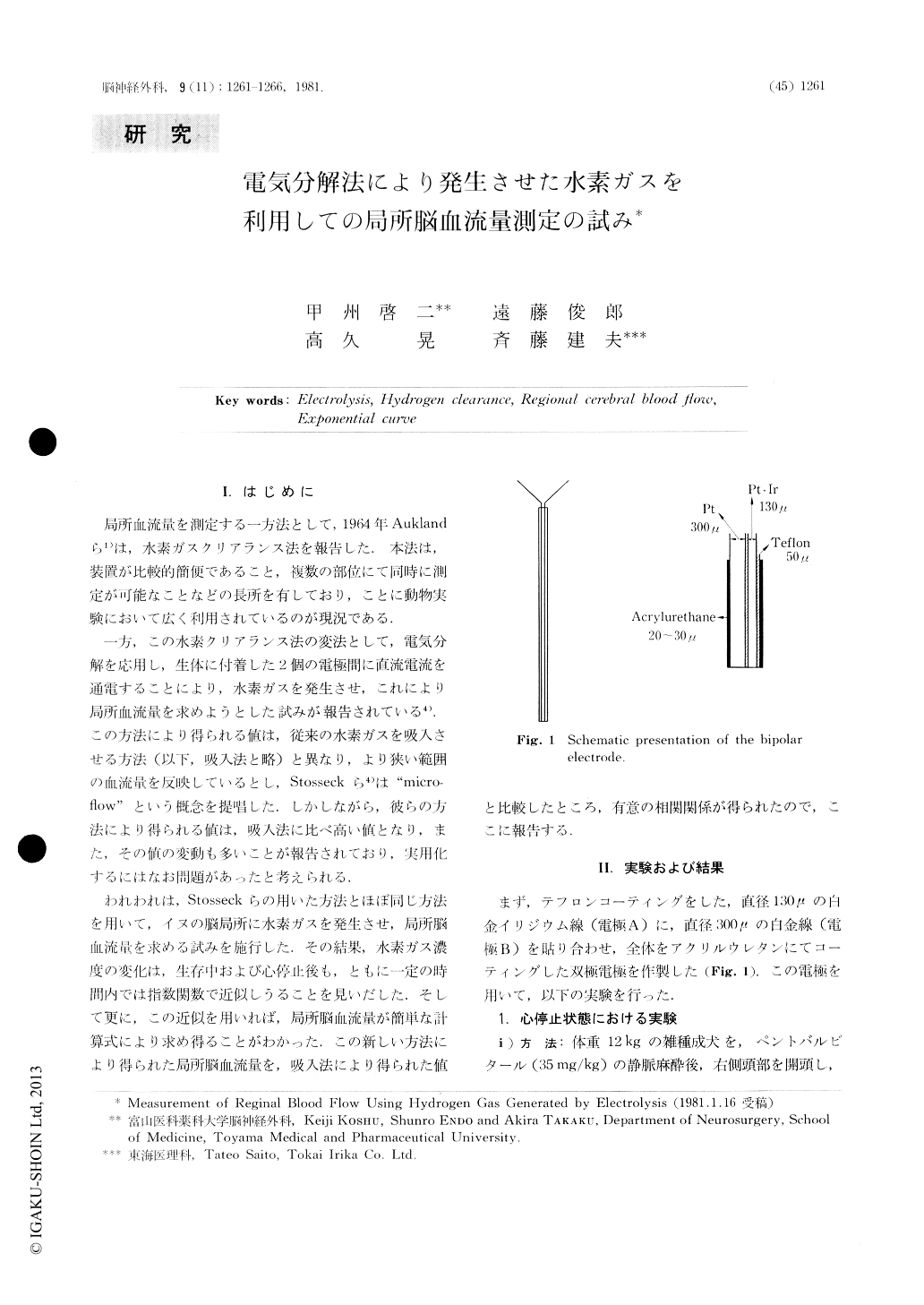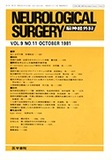Japanese
English
- 有料閲覧
- Abstract 文献概要
- 1ページ目 Look Inside
I.はじめに
局所血流量を測定する一方法として,1964年Auklandら1)は,水素ガスクリアランス法を報告した.本法は,装置が比較的簡便であること,複数の部位にて同時に測定が可能なことなどの長所を有しており,ことに動物実験において広く利用されているのが現況である.
一方,この水素クリアランス法の変法として,電気分解を応用し,生体に付着した2個の電極間に直流霜流を通電することにより,水素ガスを発生させ,これにより局所血流量を求めようとした試みが報告されている4).この方法により得られる値は,従来の水素ガスを吸入させる方法(以下,吸入法と略)と異なり,より狭い範囲の血流量を反映しているとし,Stosseckら4)は"mlicroflow"という概念を提唱した.しかしながら,彼らの方法により得られる値は,吸入法に比べ高い値となり,また,その値の変動も多いことが報告されており,実用化するにはなお問題があったと考えられる.
Electrolytically generated hydrogen gas was used to measure local blood flow by Stosseck et al. The dataobtained by their method, however, did not correlated well with that obtained by original Aukland's method, hydrogen clearance method.
We have tried to record the concentration of hydrogen gas after electrolytic generation of hydrogen gas at the white matter of the mongrel dogs. As a result, we found that its curves could be approximated to monoexponential curves during the first several minutes. This fact was also noticed in the experiment, in which circulation had been stopped due to cardiac arrest.

Copyright © 1981, Igaku-Shoin Ltd. All rights reserved.


